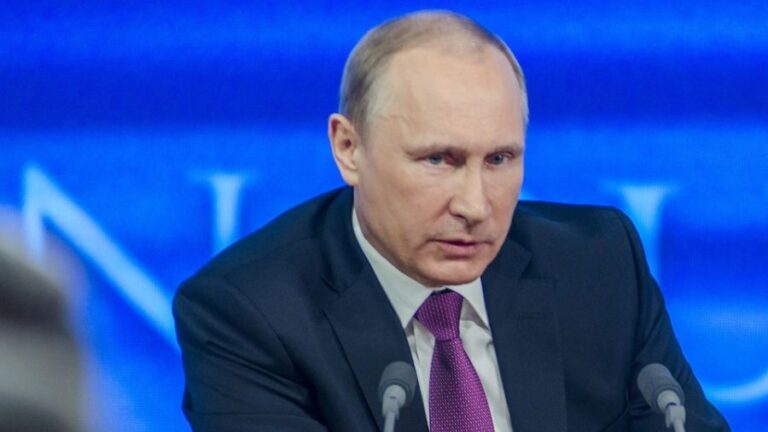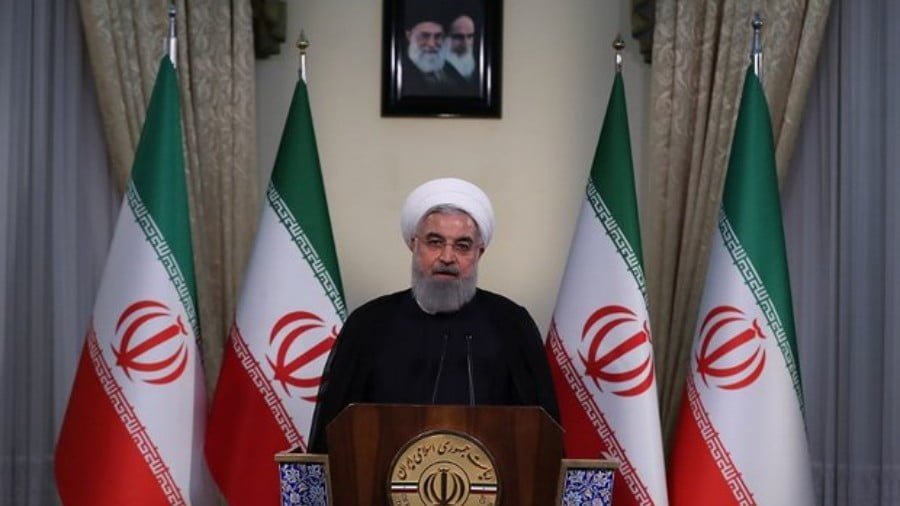There’s a Simple Reason Why Iran Isn’t in BRICS – Saudi Arabia
Many multipolar proponents have been hoping that Iran would be invited to a BRICS Summit one of these years, but that likely won’t happen anytime soon so long as the Eurasian BRICS Triangle of Russia, India, and China are wooing Saudi Arabia.
There was a heavy disappointment in the Alt-Media Community when it was confirmed that Iran wasn’t on the list of several non-BRICS countries that China invited to next week’s summit in Xiamen. Multipolar well-wishers had wrongly assumed, just as they did last year when India hosted the event in Goa, that the removal of international sanctions against Iran would lead to the Islamic Republic’s rapid inclusion in multipolar institutions such as BRICS.
The reason why this hasn’t happened is simple enough, and it has to do with the bloc’s Eurasian BRICS Triangle of Russia, India, and China wooing Saudi Arabia right now and not wanting to lose out on this exciting marketplace in the future if Riyadh rejects them because they went “overboard” in their outreaches to Tehran. Simultaneously, they’re also afraid that the potential reimplementation of US-led Western sanctions against Iran could negatively impact their businesses, so they’re “playing it safe” in a sense by holding back for now. In addition, there’s also a cynical element at play here in that they know that Iran isn’t in a position to turn its back on any of their any future institutional outreaches and economic cooperation, whereas Saudi Arabia visibly has many more options and therefore better bargaining ability with each of them right now.
This analysis will discuss the strengthened state of bilateral relations between each of the aforementioned three BRICS members and Saudi Arabia over the past couple of years, highlighting just how much everything has changed for the better between them lately. It will also include a crucial reconceptualization of what in fact BRICS actually is, since it’s the widespread misunderstanding of this bloc that has enduringly contributed to many people getting ridiculously high false hopes about it.
Reimagining BRICS
Unlike what its most zealous proponents have pretended for years already, BRICS isn’t a geopolitical platform for countering the “New World Order”, but is an economic-financial one for progressively reforming it in line with the emerging Multipolar World Order envisioned by its members. There are too many geopolitical contradictions between the bloc’s Chinese and Indian members for them to ever cooperate on this front, especially seeing as how they’re presently locked in an undeclared New Cold War all across Afro-Eurasia over their competitive connectivity projects. In spite of the friction between them, however, each has a shared stake in changing the global economic and financial systems, hence why BRICS continues to exist amidst the high level of tension between two of its most crucial members.
The moment that one reimagines BRICS as a strictly economic-financial platform (albeit with some civil society window dressing in the academic, cultural, media, and other fields) and removes any conception of geopolitical cooperation from the equation, they’ll immediately acquire an accurate understanding of this organization’s mission and limits. This in turn leads to the next logical point, which is that BRICS doesn’t seek to “unnecessarily provoke” the US, especially considering that its Indian member is now engaged in a fast-moving and unprecedented military-strategic partnership with the Pentagon ever since clinching the LEMOA deal last year and being officially designated as the US’ “Major Defense Partner”.
Iranian Uncertainty
Bearing this in mind, it’s now understandable why the organization doesn’t want to formally include Iran in its ranks, even if its members are intensifying their relations with the country on a bilateral basis. Another part of the reason has to do with the uncertainty over Iran’s overall economic security, taking into account that the Trump Administration appears insistent on re-imposing some level of multilateral Western sanctions against the country. Each individual BRICS member understands the risks involved in this and makes their own cost-benefit determination in deciding the scale and scope of economic relations with Iran, but overall and in such a grand multilateral level such as BRICS, they – for their own reasons – don’t have the collective will to stand by Iran in the event that this transpires.
Furthermore, they wouldn’t want to take the chance of having this happen right as Iran is in the process of formalizing some sort of member-state relationship with BRICS beyond its possible “observer” participation via China’s BRICS-Plus proposal. That would put tremendous pressure on the bloc’s working cohesiveness, as well as on each individual member to commit to helping the Iranian economy past whatever they might have otherwise felt comfortable doing, including by incurring potential “collateral damage” to their own interests if their companies violate US- or Western-imposed multilateral sanctions. Again, it can’t be emphasized enough how the above-mentioned re-conceptualization of BRICS is absolutely fundamental to understanding the group’s mission (economic-financial, not geopolitical) and limitations (not “unnecessarily provoking” the US).
The Saudi Strategy
Even in the off event that the BRICS members achieved geopolitical cohesion with one another and were confident enough in their collective capabilities to repel any American pressure against them for incorporating Iran into the bloc, it’s unlikely that they would do so for the foreseeable future because of each Eurasian BRICS Triangle member’s fast-developing ties with Saudi Arabia, the Islamic Republic’s arch-rival.
Here’s a brief review of what Russia, India, and China have done to intensify bilateral relations with the Wahhabi Kingdom over the past couple of years:
Russia:
Moscow envisions its 21st-century geostrategic role as being the supreme balancing force in the Eurasian supercontinent, and to this end, it applies what the author has termed the “19th-Century Great Power Chessboard” paradigm in achieving this. To elaborate, this mindset sees Russia prioritize its relations with similarly sized Great Powers at the perceived (key word) expense of its smaller- and medium-sized partners such as Serbia and Syria in order to advance the “greater good” of multipolarity.
As it relates to Riyadh, Moscow has been engaging in “military diplomacy” with the Kingdom through the recent preliminary agreement to supply it with $3.5 billion of arms and equipment, which has seen both sides commit to their first-ever joint military-technical panel by the end of the year. Moreover, as explained in the author’s earlier work about “Russia’s Mideast Energy Diplomacy: Boom Or Bust?”, Russia has very serious energy interests that are advanced by partnering up with Saudi Arabia.
India:
Prime Minister Modi made a point of visiting Saudi Arabia during his 2016 Mideast tour, in a move which surprised many by showing just how radically Indian foreign policy had changed in recent years. The driving reason behind both sides’ newfound closeness obviously has to do with their energy relations, as Saudi Arabia is India’s second-largest oil source, which makes the Kingdom India’s fourth-largest trading partner overall. In addition, there are over 3 million Indians living in Saudi Arabia as guest workers, so New Delhi has a vested interest in making sure that relations with Riyadh remain on a positive course.
Two other less-visible reasons propelling the Indian-Saudi Strategic Partnership are that New Delhi believes that this somehow spites Pakistan, and it also wants to find a way to incorporate the Kingdom into the joint “Asia-Africa Growth Corridor” (also known as the “Freedom Corridor”) that it’s building with Japan. About the first one, it should be taken for granted that India’s foreign policy is largely Pakistan-centric in that its decision makers are utterly obsessed with doing whatever they can – whether in real-life or imagined – to counter their neighbor, while the second one has a pragmatic basis rooted in diversifying both sides’ economic relations beyond their energy dependency.
China:
China is the Great Power out of all three that has the best relations with Saudi Arabia, which the author described in detail in his piece earlier this year titled “Why Is China Choosing To Partner With Israel And Saudi Arabia?”. Just like India, China’s relations with the Kingdom are founded on a strong energy basis, as Saudi Arabia is the second-largest oil supplier (barely behind Russia) to the People’s Republic. Nevertheless, relations have diversified much more broadly from there, starting with the deal that China signed last year to build a drone factory in the country and eventually leading to two separate sprees of economic agreements worth $65 billion and $70 billion just this year alone. The Saudi King even visited China roughly half a year ago, too.
It’s obvious what China aims to do, and that’s incorporate Saudi Arabia into its One Belt One Road global vision of New Silk Road connectivity through real-sector economic deals in spheres as varied as nuclear energy, transportation, and banking. The grand strategic goal behind this approach is to gradually bring the country into the multipolar fold by progressively replacing the influence that the US holds over it, with the expectation being that this will lead to a moderation of Saudi foreign policy that would be beneficial for fostering regional peace. Although China has been harshly attacked for what its critics claim is its policy of “capturing control” of smaller states through economic means, in this instance, such a move might actually be lauded by multipolar supporters if it comes to pass.
Saudi Arabia vs. Iran
Placing them back-to-back, there are certain pros and cons that the Eurasian BRICS Triangle of Russia, India, and China see in Saudi Arabia and Iran.
Saudi Arabia:
Russia, China, and India are attracted to Saudi Arabia’s ambitious “Vision 2030” blueprint for diversifying its economy and potentially enabling a multipolar breakthrough in the country, and they also like how Riyadh has powerful Ummah-wide influence (for better or for worse) because this could ideally be redirected to assist each of them in their own Mideast “pivots” in the wake of the US’ perceived (operative word) conventional drawdown in this theater.
On the other hand, Saudi Arabia has several structural deficiencies which could pose a real risk to foreign investments here. The first is that the oil price collapse and the disastrous War on Yemen have put a severe strain on the state’s coffers, questioning the ability of Saudi Arabia to fulfill the hundreds of billions of dollars’ worth of deals that are expected to constitute the “Vision 2030” program. The other issue has to do with the ever-mysterious royal intrigue in the country and regular Shiite uprisings in the oil-rich Eastern Province, both of which could lead to sudden instability.
Iran:
As for Iran, the Eurasian BRICS Triangle absolutely loves the country’s perfect geostrategic position at the crossroads of Russia and India’s North-South Transport Corridor and the southern route of China’s New Silk Road, and they assume (whether rightly or wrongly) that there’s no foreseeable chance that Western companies could ever push their own completely out of this growing marketplace. This endows them with a certain complacency which explains the lack of urgency that they’ve expressed in investing here.
Having said that, Russia, China, and India know that Iran is being targeted by the US-“Israeli”-Saudi Exceptionalist Troika for identity-centric Hybrid War, and that any reintroduction of US-led Western sanctions against the Islamic Republic could lead to “collateral damage” for their own in-country firms. Given the high likelihood that Iran will continue to be victimized by these asymmetrical measures into the future, the BRICS are understandably exercising caution in incorporating this besieged country into their economic-financial bloc.
Concluding Thoughts
The ever-pervasive question posed by BRICS’ most passionate and idealistic supporters about why Iran isn’t yet a member of the bloc is somberly answered by the cold, hard reality that their glorified organization isn’t the “anti-New World Order” force that they’ve for some inexplicable reason convinced themselves that it is, but is rather a much more pragmatic, albeit nevertheless ambitious, group which aims to progressively transform the global economic and financial systems.
BRICS is not about catalyzing rapid, “revolutionary” change, but progressive, phased reforms, and it accordingly doesn’t seek to “unnecessarily provoke” the US by including its hated Iranian rival into its ranks, not least of all because of member-state India’s newfound and unprecedented military-strategic partnership with the US.
Apart from these important foundational reasons, there are also much more immediate “self-interested” ones relating to the Eurasian BRICS Triangle’s relations with Saudi Arabia, as Russia, China, and India know that Riyadh is much less likely to court multipolar investment from overtly pro-Iranian multipolar potential partners than it is from its traditional anti-Iranian unipolar ones, which explains why each of them feels compelled to “play it safe” for now by keeping Iran officially out of the BRICS format.
None of this means that the three states won’t continue to deepen their ties with Tehran on a bilateral basis, but just that it would surely be “crossing the line” if they all agreed to include Iran into BRICS, especially considering the aforementioned strategic conditionals that were just described pertaining to the organization’s realistic limitations and the caution that each member has in unintentionally “offending” the sensitivities of their new Saudi “goldmine”.
By Andrew Korybko
Source: Regional Rapport







